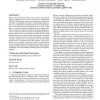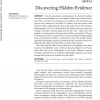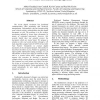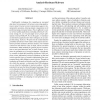15 search results - page 3 / 3 » Hiding data, forensics, and anti-forensics |
CCS
2009
ACM
15 years 6 months ago
2009
ACM
Kernel-mode rootkits hide objects such as processes and threads using a technique known as Direct Kernel Object Manipulation (DKOM). Many forensic analysis tools attempt to detect...
108
click to vote
IJDE
2006
14 years 11 months ago
2006
Rootkits are malicious programs that silently subvert an operating system to hide an intruder's activities. Although there are a number of tools designed to detect rootkits, ...
120
click to vote
JDFP
2006
14 years 11 months ago
2006
Over the past decade, the advancement of a myriad of methods, techniques and technologies to conceal digital evidence and covertly communicate have increased at an alarming rate. I...
CRV
2008
IEEE
15 years 1 months ago
2008
IEEE
The recent digital revolution has facilitated communication, data portability and on-the-fly manipulation. Unfortunately, this has brought along some critical security vulnerabili...
104
click to vote
NDSS
2008
IEEE
15 years 6 months ago
2008
IEEE
Traditionally, techniques for computing on encrypted data have been proposed with privacy preserving applications in mind. Several current cryptosystems support a homomorphic oper...




